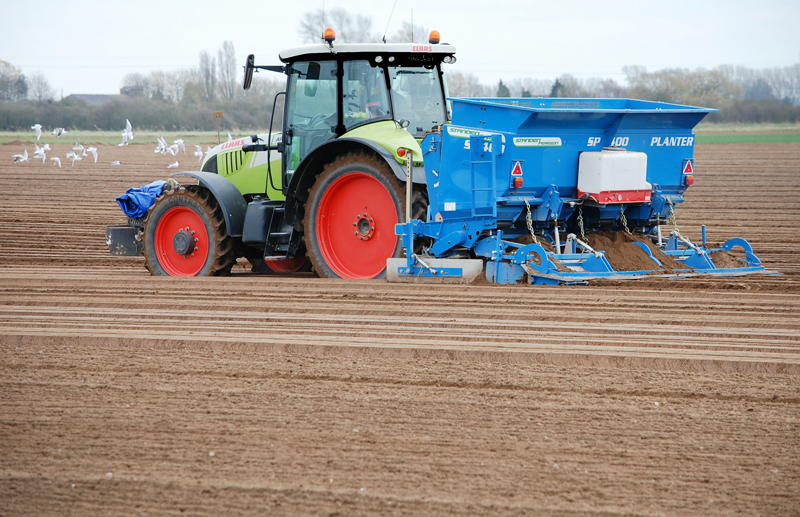Potato trials reinforce value of variety choice
12th March 2020
With planning underway for the 2020 potato season, results from the Hutchinsons Fenland demonstration in Suffolk have provided a timely reminder of how important careful variety selection is for managing key agronomic challenges.

With planning underway for the 2020 potato season, results from the Hutchinsons Fenland demonstration in Suffolk have provided a timely reminder of how important careful variety selection is for managing key agronomic challenges.
Variety characteristics are particularly important for potato cyst nematode (PCN) control, which is a focus of the Fenland trials, while other work shows the loss of diquat for desiccation and haulm management could further affect planting decisions.

“Our work over three years shows real inroads can be made into PCN control with judicious use of the most appropriate varieties, and it may be possible to “buy” leeway to grow less resistant varieties in combination.”
This year’s trial site, hosted by A.L Lee Farming Company, was under higher PCN pressure than previous seasons, with an average initial egg count (Pi) of 115 eggs/g of soil, all Globodera pallida.
Some 18 varieties with different levels of resistance and tolerance were trialled to see how crops performed and how they impacted on the PCN egg count in the soil after harvest (Pf).
Results show a similar pattern to previous years, with Cara performing worst for PCN multiplication, with a Pf:Pi ratio of 4.5. This was despite it doing well in the tolerance trial and shows the clear practical differences between “resistance” and “tolerance”.
“Markies also performed badly and has been consistently poor, typically averaging 2.5 to 3-times multiplication in three years of trials,” Dr Keer says.
In contrast, resistant varieties Performer and Arsenal were again most effective at reducing PCN over the season, with a Pf:Pi of less than 0.5 (i.e. egg count halved).
“Performer, Rock and Innovator have shown good consistency for reducing PCN after a crop in our trials. Lugano, Libero, and Royal also did well in 2019.”
Varietal tolerance results generally support previous years, with more vigorous varieties such as Arsenal, Cara, Performer, Rock and Royal, showing good tolerance, while Maris Peer, Innovator and Sagitta were less tolerant.
“Markies is the one that seems to break the rules. It’s very vigorous, but shows low tolerance.”
PCN tolerance is heavily dependent on soil type and moisture, as very fertile soils can be more forgiving to the effects of PCN, while dry conditions reduce nematode movement, he adds.
Consider canopy management
With pre-harvest desiccation set to become more difficult and take longer without diquat, agronomist Andrew Cromie says some growers may need to re-evaluate variety choices, cropping plans or fertiliser strategy to reduce the likelihood of having very large, growing canopies late in the season.
The desiccation and haulm management trial shows flailing followed by repeated splits of chemical desiccation will be key to canopy destruction, especially for large, determinate varieties. A herbicide application prior to flailing also helps open the canopy.
CIPC warning
Potato growers are urged not to risk applying any chlorpropham (CIPC) sprout suppressant to the 2020 crop, even though there may be time to do so before the final use-up date of 8 October 2020.
David Wilson of AHDB Potatoes says after the October cut-off, the Maximum Residue Limit (MRL) will immediately drop to a new lower level, which any crop treated in that season is likely to exceed, therefore preventing it from being sold.
“If you fog them, you can’t flog them” is the AHDB slogan to warn growers of the risk.
Under current EU rules, the MRL could drop to the “limit of quantification” of just 0.01ppm after CIPC is banned, however the industry is campaigning for this to be raised, given the background levels of CIPC in the fabric of many stores. AHDB tests of bulk and box stores with different histories of CIPC use found residues ranged from 0.052ppm to 0.36ppm.
“We’re hoping EFSA approve a temporary MRL of 0.4-0.5ppm, which will reduce over time, but should give time for background residues to diminish. This MRL won’t be approved until after the last sale date for CIPC (8 January 2020),” says Mr Wilson.
“The MRL is a real challenge for the industry. Don’t be tempted to squeeze one more CIPC application onto the 2020 crop, because the risk of exceeding the MRL is too high.”
